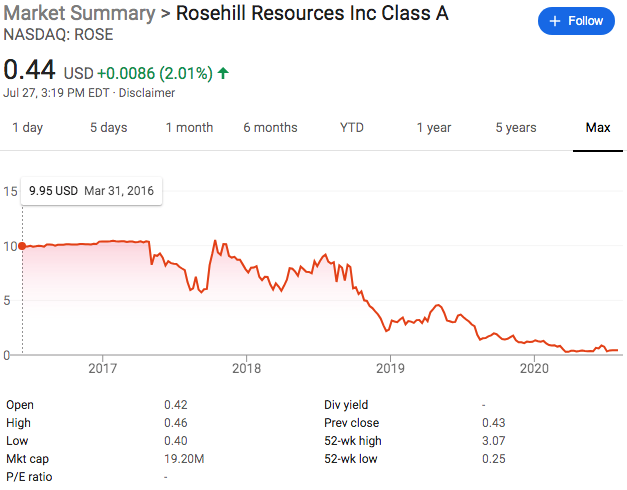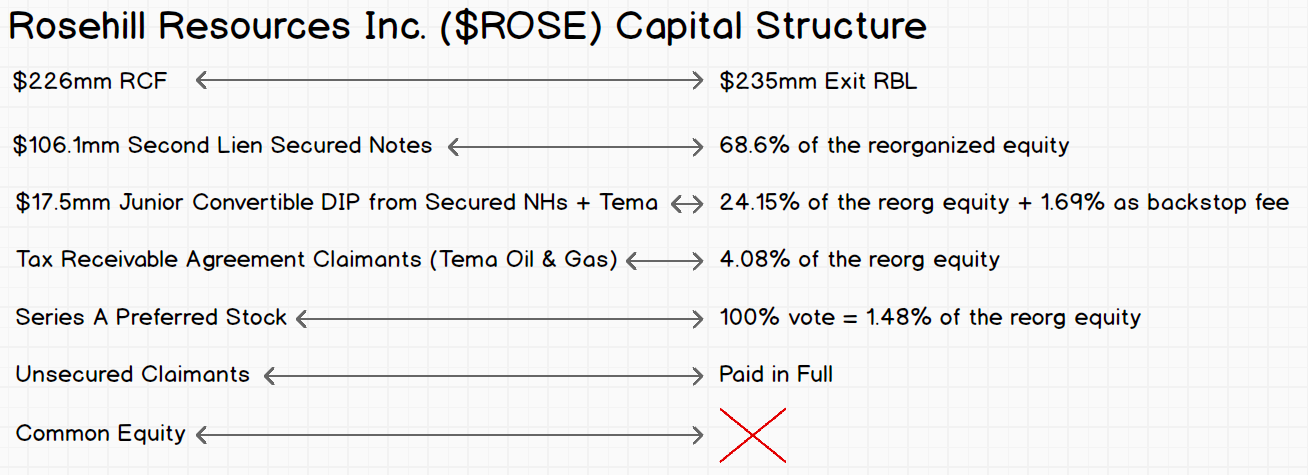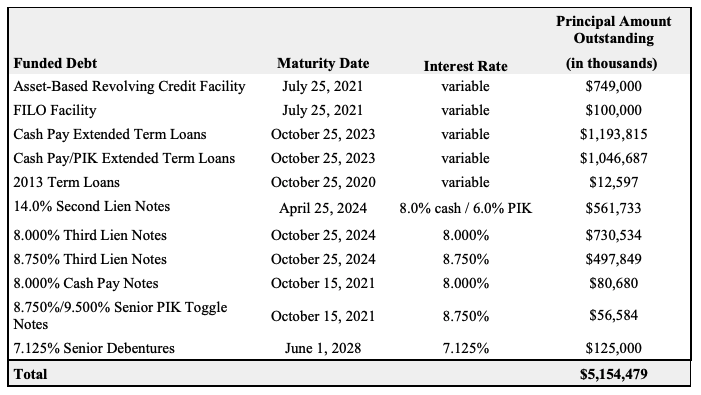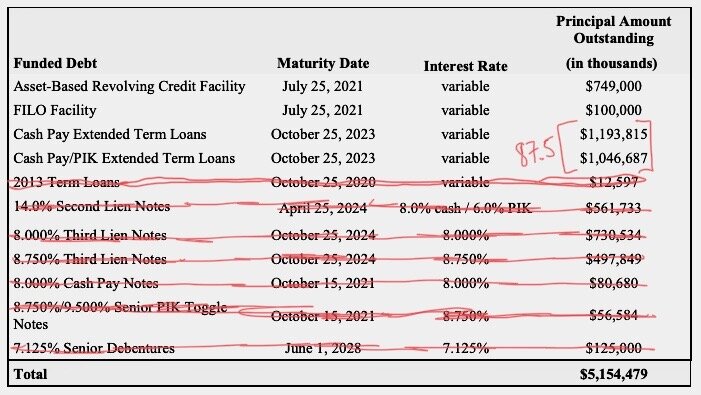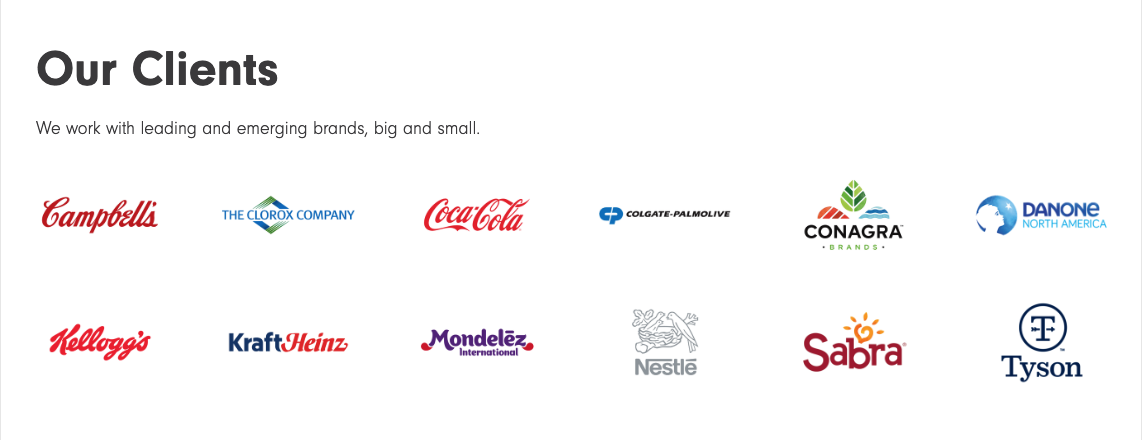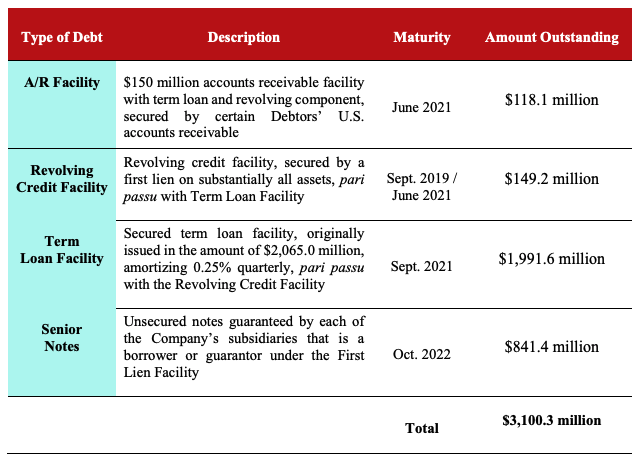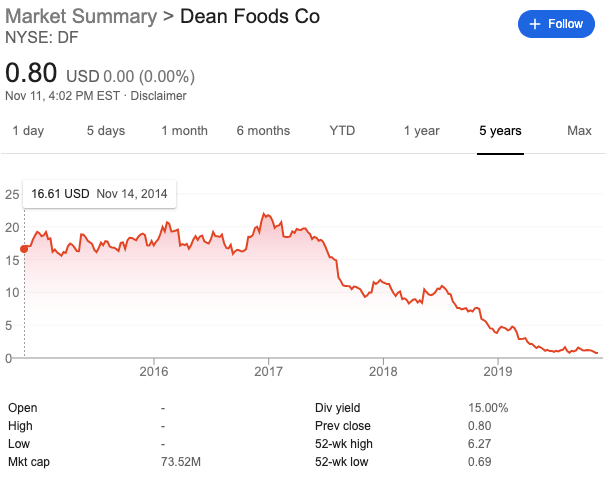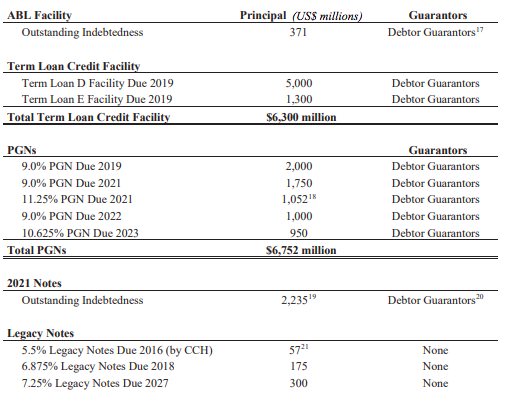New Chapter 11 Bankruptcy Filing - RGN-Group Holdings LLC (d/b/a Regus)
RGN-Group Holdings LLC
We have yet to really see it run through the system but there’s no doubt in our minds that there is a commercial real estate and commercial mortgage-backed security massacre on the horizon. The hospitality sector, in particular, ought to be on the receiving end of a pretty harsh shellacking. More on this in a future edition of PETITION.
For now, the most high profile CRE activity we’ve seen thus far is the trickle of Regus locations that have filed for bankruptcy. Regus is an on-demand and co-working company with 1000 locations across the United States and Canada. Set up as special purpose entities with individual leases, the structure is such that IWG Plc f/k/a Regus Corporation (OTCMKTS: $IWGFF) serves as both ultimate parent and lender but isn’t a guarantor or obligor under any of the downstream leases.* This non-recourse structure allows for individual Regus locations to plop into bankruptcy — all with an eye towards working out lease concessions or turning over — without taking down the entirety of the enterprise.**
The first outpost, RGN-Columbus IV LLC, filed for bankruptcy in Delaware back on July 30. Since then, sixteen additional Regus affiliates have filed with the most recent ones descending upon Delaware last week: RGN-Philadelphia IX LLC, RGN-Chevy Chase I LLC, RGN-Los Angeles XXV LLC, RGN-San Jose IX LLC, RGN-New York XXXIX and RGN-Denver XVI LLC. All of the cases filed under Subchapter V of chapter 11 of the bankruptcy code (though, thanks to the addition of more locations, the case has been re-designated under Chapter 11).***
The description of the overall business model is precious:
IWG’s business model begins with entry into long-term non-residential real property leases (each, a “Lease”) with property owners (each, a “Landlord”) that provide the Company unoccupied office space (the “Centers”). Based on significant market research on potential client needs in local markets and the unique requirements of their existing clients, IWG engineers each of the Centers to meet the architectural style, service, space, and amenity needs of those individuals, companies, and organizations who will contract for use of subportions of the Centers. IWG markets its Centers under an umbrella of different brand names, each tailored to appeal to different types of clients and those clients’ specialized needs. These clients (the “Occupants”) enter into short-term licenses (each, an “Occupancy Agreement”) to use portions of the Centers, which are customizable as to duration, configuration, services, and amenities. When operating successfully, a Center’s Occupants’ license payments (“Occupancy Fees”) will exceed the combined cost of the underlying long-term lease, management cost, and operating expenses of the Center. (emphasis added)
It’s the “when operating successfully” part that always bewildered watchers of the co-working business model generally. After all, it was easy to see the mass expansion of co-working spaces amidst the longest bull run in market history. Indeed, Regus apparently had “Good first half performance overall given COVID-19 impact in Q2.” The question was: what happens in a downturn? The answer? You start to see the model when it operates unsuccessfully. In this scenario, occupancy rates dip lower than expected. Prior geographic expansion begins to look irresponsible. Pricing declines to attract new sales and renewals. And current occupants begin to stretch their payables.**** In total, it ain’t pretty. By way of example, take a look at some of the numbers:*****
Source: PETITION, Chapter 11 Petitions
But while the operating performance of those select locations may be ugly AF, the structure bakes in this possibility and isolates the cancer. Aside from the landlords, the locations have virtually no creditors.
Each debtor location is an obligor pursuant to a senior secured loan agreement with Regus making for an intercompany obligation. There’s no other funded debt.
The debtors are otherwise subject to a management agreement with non-debtor Regus Management Group LLC (“RMG”) pursuant to which each debtor is obligated to reimburse RMG for gross expenses incurred directly by RMG in performing management services plug a 5.5% vig on gross revenues.
The debtors are also subject to an equipment lease agreement with debtor RGN-Group Holdings LLC. Under this agreement the debtors are obligated for the original cost of fixtures, furniture and equipment plus a margin fee.
As if those agreements didn’t siphon off enough revenue, the debtors are also subject to franchise agreements pursuant to which the debtors have the right to operate an IWG business format in their respective locations and use certain business support services, advice and IT in exchange for a monthly 12% vig on gross revenue.
Given most of the debtors’ obligations are intercompany in nature, what did Regus do? It tried to stick it to its landlords. Duh.
Like so many other companies navigating these troubled times, the Company instituted a variety of comprehensive actions to reduce costs and improve cash flow and liquidity, including the deferral of rent payments and engagement with Landlords to negotiate forbearances, temporary accommodations, and, where possible, permanent modifications to the various Leases to bring them in line with the COVID-19-adjusted market realities so as to permit the Company to continue operating Centers at those respective locations despite the uncertainty when the pandemic will subside and when (and indeed, whether) the U.S. will return to something resembling the pre-pandemic “business as usual.”
Certain landlords, of course, played ball. That helped lessen Regus’ funding burden in the US. But, of course, others didn’t. Indeed, various landlords sent default/eviction notices. Hence the aforementioned bankruptcy filings:
…the Debtors commenced their Chapter 11 Cases to prevent the forfeiture of the Lease Holder Debtors’ Leases, and to preserve all Debtors’ ability to operate their respective businesses—thereby, importantly, protecting the Occupants of the Lease Holder Debtors’ Centers from any disruption to their businesses. I expect that the “breathing spell” from Landlords’ collection efforts that will be afforded by the chapter 11 process will allow the Debtors, and the Company more broadly, to more fully explore the possibility of restructuring their various contractual obligations in order to put the Company’s North American portfolio on a surer footing going forward, so as to allow the Debtors to emerge from this process stronger and more viable than when they went in. If these restructuring efforts prove unsuccessful, the Lease Holder Debtors intend to utilize the procedures available to them under the Bankruptcy Code to (i) orderly wind down the operation of the applicable Centers (including, to the extent necessary, the removal of the FF&E from the leased premises, and to the extent possible, transition of the Occupants to other locations), (ii) liquidate the amounts due to the Landlords under their respective Leases and guarantees, as well as amounts due to the Debtors’ affiliates under their respective agreements, and (iii) to make distributions to creditors in accordance with their respective priorities under the Bankruptcy Code and applicable law.
Said another way: this is gonna be a landlord/tenant battle. Regus has offered to provide $17.5mm of DIP financing to give the debtors time to negotiate with their landlords. To the extent those negotiations (continue to) fail, the debtors will no doubt begin to reject leases left and right.
*****
They likely won’t be alone. Per The Wall Street Journal:
The world’s biggest coworking companies are starting to close money-losing locations across the globe, signaling an end to years of expansion in what had been one of real estate’s hottest sectors.
The retreat reflects an effort to slash costs at a time when the coronavirus is reducing demand for office space, and perhaps for years to come. It also shows how bigger coworking firms, in a race to sign as many leases as possible and grab market share, overexpanded and became saddled with debt and expensive leases.
The share of coworking spaces that have closed is still small. In the first half of the year, closures accounted for just 1.5% of the space occupied by flexible-office companies in the 20 biggest U.S. markets, according to CBRE Group Inc.
Knotel, for instance, seems to be making a habit of getting sued for unpaid rent. Query whether we’re at the tip of the iceberg for co-working distress.
*Other debtor entities, however, like RGN-Group Holdings LLC, RGN-National Business Centers LLC and H Work LLC do sometimes act as guarantors. Hence their bankruptcy filings. RGN-Group Holdings LLC isn’t a lease holder; rather, it owns all of the furniture, fixtures, equipment and other personal property and leases it all fo the respective SPE centers across the US pursuant to Equipment Lease Agreements.
**The nuance of this structure was constantly lost in the furor over WeWork back when WeWork was a thing that people actually cared about. Since we’re on the topic of WeWork, we suppose we ought to explain the video above. WeWork’s eccentric founder, Adam Neumann, was on record saying that he thought WeWork would thrive during a downturn due to its flexible structure — a point that has obviously been disproven by what’s transpired over the past few months. That said, and to be fair, he clearly didn’t have “social distancing” in mind when he hypothesized that result.
***We wrote about Subchapter V last month in the context of Desigual’s bankruptcy filing. We said:
Luckily for a lot of businesses, the Small Business Reorganization Act (SBRA and a/k/a Subchapter V) went into effect in February. Coupled with amended provisions in the CARES Act, the SBRA will make it easier for a lot of smaller businesses to restructure because:
It established a higher threshold ($7.5mm vs. $2.7mm) to qualify which means more businesses will be able to leverage the streamlined SBRA process to restructure. Previously, businesses over that cap couldn’t utilize Subchapter V which made any shot at reorganization via bankruptcy far too expensive for smaller businesses. The only alternative was dissolution and liquidation.
Debtors under SBRA can spread a payment plan for creditors over 3-5 years. Debtors get the benefit of the payments spread out over time and creditors can potentially recover more. Aiding this is the fact that admin expenses also get paid over time and debts are not discharged until all plan payments are fulfilled.
A plan must be filed within 90 days. The shorter time frame also contains cost.
A trustee must be appointed and effectively takes the place of a UCC which may only be formed on showing of cause.
Companies are taking advantage of this.
****It probably stands to reason that various client programs the debtors typically depend upon are less likely to generate results under this scenario. The debtors nevertheless filed a motion seeking to continue these programs. They include (a) rebate programs for occupants who spend over a certain annual amount, (b) occupancy agreement promotions such as discounts, reduced rent costs, one or more months of free rent, etc., and (c) occupant referral fees. Suffice it to say, occupants likely aren’t referring in many other occupants during COVID. Consequently, the debtors ultimately withdrew this motion. All of this brings up another criticism of WeWork: what, exactly, is a co-working space’s moat? As justification for these programs, the debtors say:
The Lease Holders operate in a very competitive and dynamic market and with many competitors for the same customers. The loss of one or more Occupants could significantly impact the Debtors’ profitability, and therefore, the Client Programs require timely coordination on the part of the Lease Holders to ensure the maximum generation of customer agreement profits and brand awareness during this restructuring.
Case and point.
*****These numbers are YTD for the period ended June 30, 2020.
For more commentary and analysis about distressed investing, restructuring and/or bankruptcy, please visit us here.
Dates:
RGN-Columbus IV LLC (July 30, 2020)
RGN-Chapel Hill II LLC (August 2, 2020)
RGN-Chicago XVI LLC (August 3, 2020)
RGN-Fort Lauderdale III LLC (August 8, 2020)
RGN-Group Holdings LLC (August 17, 2020)
H Work, LLC (August 17, 2020)
RGN-National Business Centers LLC (August 17, 2020)
RGN-Lehi LLC (August 27, 2020)
RGN-Lehi II LLC (August 27, 2020)
RGN Atlanta XXXV LLC (August 29, 2020)
RGN-Arlington VI LLC (August 30, 2020)
RGN-Chevy Chase I LLC (September 2, 2020)
RGN-Philadelphia IX LLC (September 2, 2020)
RGN-Denver XVI LLC (September 3, 2020)
RGN-New York XXXIX (September 3, 2020)
RGN-Los Angeles XXV LLC (September 3, 2020)
RGN-San Jose IX LLC (September 4, 2020)
Jurisdiction: D. of Delaware (Judge Shannon)
Capital Structure: N/A
Company Professionals:
Legal: Faegre Drinker Biddle & Reath LLP (James Conlan, Mike Gustafson, Patrick Jackson, Ian Bambrick, Jay Jaffe)
Financial Advisor: AlixPartners LLP (Stephen Spitzer)
Restructuring Advisor/Chief Restructuring Officer: Duff & Phelps LLC (James Feltman)
Claims Agent: Epiq Corporate Restructuring LLC (Click here for free docket access)
Subschapter V Trustee: Gibbons PC (Natasha Songonuga)
Other Parties in Interest:
Regus Corporation, Regus Management Group, LLC and Franchise International GmbH
Legal: Young Conaway Stargatt & Taylor LLP (Robert Brady, James Hughes Jr., Joseph Barry, Justin Duda, Ryan Hart)
Starwood Capital Group
White & Case LLP (Harrison Denman, John Ramirez) & Potter Anderson & Corroon LLP (Christopher Samis, Aaron Stulman)


